#Bats of asia
Explore tagged Tumblr posts
Text

Australasian Bent-Winged Bat, photographed by Brett Vercoe, (source)
#Australasian Bent-Winged Bat#Australasian Bent-Wing Bat#miniopterus orianae#bat#bats#cute bats#daily bats#bats of asia#bats of oceania#batposting#chiroptera#bent-winged bat#miniopteridae
41 notes
·
View notes
Text
Coffee Bat

425 notes
·
View notes
Text
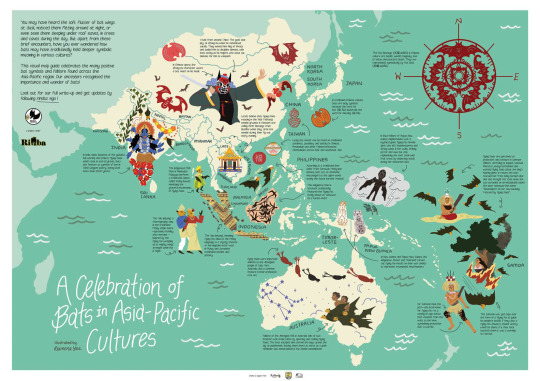
Bat Week 2020: A Celebration of Bats in Asia-Pacific Cultures Art by Reimena Yee.
(Bigger image from here for more readable text. The background colouring is a little too bright though)
Text on the map under the cut.
You may have heard the soft flutter of bat wings at dusk, noticed them flitting around at night, or even seen them sleeping under roof eaves, in trees and caves during the day. But apart from these brief encounters, have you ever wondered how bats may have traditionally held deeper symbolic meaning in various cultures?
This visual map guide celebrates the many positive bat symbols and folklore found across the Asia-Pacific region. Our ancestors recognised the importance and wonder of bats!
Look out for our full write-up and get updates by following rimba.ngo!
Project Pteropus, a project under RIMBA.
India
In India, Hindu devotees of the goddess Kali worship and protect flying foxes which roost in sacred groves. Bats also feature as symbols of love in Tamil Sangam poetry, dating back more than 2000 years!
China / Taiwan / Chinese culture
A tale from ancient China: The gods took pity on Zhong Kui when he committed suicide. They named him King of Ghosts and tasked him to discipline demons, with bats acting as his helpers who scout out demons for him to vanquish.
In Chinese opera, the Zhong Kui character wears a bat motif on his mask.
The Five Blessings (五福 wŭfú) in Chinese culture are health, wealth, longevity, love of virtue and peaceful death. They are represented symbolically by five bats (五蝠 wŭfú).
In traditional Chinese culture, bats are lucky symbols because the word for bat (蝠 fú) sounds like the word for blessing (福 fú).
Lucky bat motifs can be found on traditional ceramics, jewellery and textiles in Chinese, Peranakan and other Chinese-influenced communities across East and Southeast Asia.
Vietnam
Locals believe that flying foxes roosting in the Wat Mahatup temple grounds in Vietnam are calling forth blessings from Buddha when they circle the temple during their fly-out every evening.
Malaysia / Indonesia
The indigenous Mah Meri in Peninsular Malaysia perform a traditional dance called 'kuang kuwait', mimicking the graceful movements of flying foxes.
The 'siku keluang' a choreography step in the traditional Malay Zapin dance represents humility and restraint - inspired by the flying fox wrapping up its mighty wings' strength when not in flight.
The 'siku keluang', meaning flying fox elbow in the Malay language, is a zigzag, chevron or herringbone motif used in Malay and Javanese traditional textiles and pottery.
According to a traditional Iban belief from Sarawak, Malaysian Borneo, bats act as shamanic messengers to the upper-world during the Gawai harvest festival.
The indigenous Iban in Sarawak traditionally featured the flying fox, locally known as 'semawa', as a tattoo motif.
Papua New Guinea / Western New Guinea
In Bowi folklore of Papua New Guinea, Kinjinmbunduo was a mythical giant flying fox female spirit who left thunderstorms and strong winds in her wake, striking terror and awe but also replenishing the river basin with fruit trees by dispersing seeds during her nocturnal visits.
In New Guinea and Papua New Guinea, the indigenous Asmat and Trobriand carved out flying fox motifs on their war shields to represent triumphant head-hunters.
Samoa
Flying foxes are perceived as protectors and saviours in Samoan folklore. According to legend, Samoan Princess Leutogi befriended and warned flying foxes about the king's hunting plans. In return, the bats rescued her from being burned alive and also brought her food when she was stranded on an inhospitable island. She later bestowed the name "Tonumaipe'a" on her son, meaning "rescued by flying foxes".
For Samoan men, the pe'a—the local name for flying fox is a coming-of-age tattoo that extends From the waist to the knee, symbolising protection over a warrior.
The Samoan war god Sepo took the form of a flying fox to guide his people in battle. If they saw a flying fox ahead, it meant victory would be theirs; if it flew back towards them it was a warning to retreat.
Australia
Flying foxes were important animals to the Aboriginal people of Cape York, Australia, and a common feature in their prehistoric rock art.
Folklore of the Aboriginal Wik in Australia tells of two brothers who broke taboo by spearing and cooking flying foxes. The bats escaped and carried the boys up into the sky as punishment, leaving them there to serve as a grim reminder now immortalised in the Gemini constellation!
Link to open access article of the research:
#bat#bats#asia pacific#south east asia#asia#folklore#culture#cultures of the world#asian culture#chinese culture#tradition#indigenous#indigenous culture#bat week#chiroptera#mammal#animal#bats of asia#india#china#taiwan#vietnam#malaysia#indonesia#papua new guinea#new guinea#samoa#australia#partially described#bat info
3 notes
·
View notes
Text
The Painted Woolly Bat (Kerivoula picta): this bat species has a stunning orange-and-black appearance

Kerivoula picta is commonly known as the painted woolly bat, thanks to its strikingly colorful appearance and thick, curly fur. Researchers believe that its orange coloration might actually serve as camouflage, to some extent, as it has been reported that the bats can easily blend in with dried leaves and flowers when they are roosting.
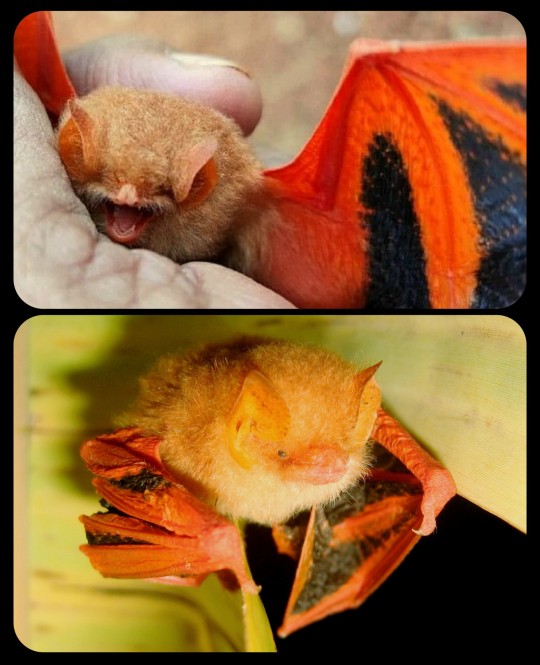
For several months each year, these bats form small family units that generally contain two adults and one pup. They often reconnect with the same reproductive partner over multiple breeding seasons.

This species is increasingly threatened by the international demand for so-called "bat décor:"
... painted woolly bats (Kerivoula picta) are collected and killed in their native habitat in South and Southeast Asia and sold as décor globally. The United States is a major and growing market for this trade: The U.S. has imported hundreds of painted woolly bats over recent years. As this species is not bred in captivity, all the bats are taken from the wild.
Painted woolly bat populations are declining. The International Union for Conservation of Nature assessed the species as “near threatened,” yet few nations within the species’ range offer the bats effective protection from killing. The bats live in China, India, Bangladesh, Cambodia, Indonesia, Lao PDR, Myanmar, Nepal, Sri Lanka, Thailand and Viet Nam.
Given that they only produce one offspring at a time, painted woolly bats are particularly vulnerable to trade. Scientists have been raising concerns about the potential harms of the bat décor trade for nearly a decade, yet the market has only grown. Online listings offering painted woolly bats for sale are plentiful on major ecommerce websites.
This article provides more information about the threats that this species is currently facing and the ongoing efforts to protect it.

Sources & More Info:
Bat Conservation International: Kerivoula picta
Thai National Parks: Painted Bat
Mammal Study: The Ecology and Monogamous System of the Painted Woolly Bat, Kerivoula picta
Ecology and Evolution: Bat Mating Systems
Cambridge University Press: Growing Concern Over Trade in Bat Souvenirs from Southeast Asia
European Journal of Wildlife Research: Dying for Décor
Center for Biological Diversity: Endangered Species Act Protections Sought for Painted Woolly Bats
Center for Biological Diversity: Going to Bat for Painted Woolly Bats
UC Davis: E-Sales of a Wild Bat Sold as Décor Threaten Species
#painted bat#kerivoula picta#painted woolly bat#bats#mammals#science#cool animals#animal camouflage#mimicry#conservation#endangered species#threatened species#southeast asia
108 notes
·
View notes
Text

flying foxes
103 notes
·
View notes
Text

An Indian flying fox (Pteropus medius) stretches on a branch in Fonimagoodhoo, Maldives
by Gary Faulkner
#indian flying fox#flying foxes#bats#pteropus medius#pteropus#Pteropodidae#chiroptera#mammalia#chordata#wildlife: maldives#wildlife: asia
168 notes
·
View notes
Text
I made that post about the bloo perfume a day ago and y'allll there are SOOOO much merchandise I really want. There's a bat, shoelaces, slippers, keychains, bruh there's like an employee exclusive sweatshirt that's bloo themed with his eyes on top of the hoodie. I NEED ALL OF IT



#bloo#fosters home for imaginary friends#fosters home#fhfif#bloo fhfif#fhfif bloo#blooregard q. kazoo#hot topic#2000s#y2k#theres a listing on ebay for the hoodie but its SOOOOO expensive omg#if yall see any of these in the wild LET ME KNOW!!!#all i have is a very rare bloo plushie that only came out in asia on a plane in 2007 and my friend got it at a goof price of only 19 dollar#imagine being beaten to death by a bloo bat LMAOOO
41 notes
·
View notes
Note
Im not gonna lie I genuinely was shocked to see you post a vulture culture post. Not that im not pleased! But of all the blogs I follow, Yours was not a suspect until I saw your name at the top.
it's not a thing I'm into myself but I am adjacent to many people who are into it and I sure can appreciate a good skull
#please make sure your stuff is appropriately sourced though and DO NOT BUY BATS#many bat species in asia and africa that are understudied are being drastically overharvested to make 'bat mummies' and museum specimens
97 notes
·
View notes
Text




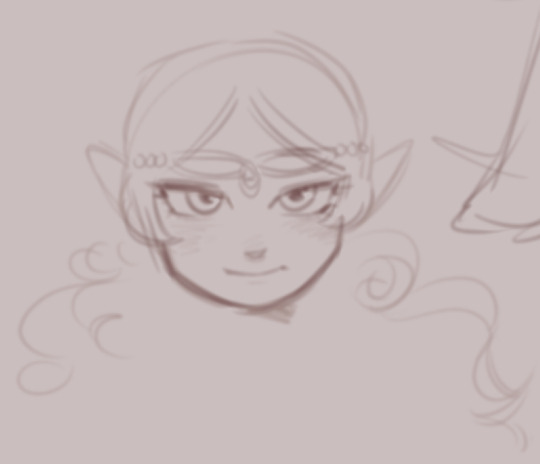


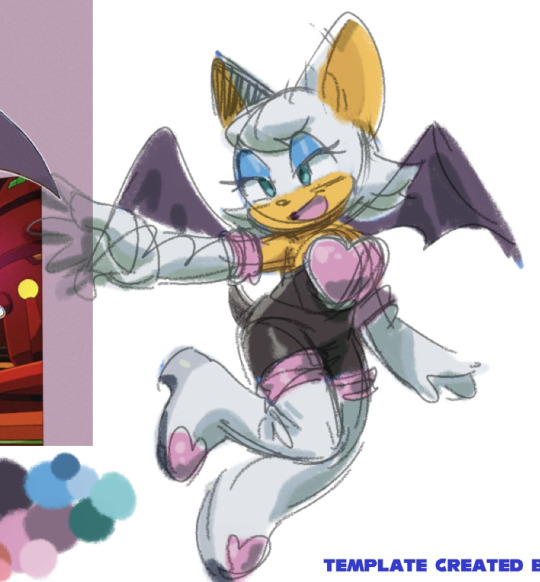


Sorry no art lately ive been star railing insanely for weeks now
#my art#tag all the charas later im too lazy#sonic the hedgehog#this is a#legit a doodle dump acc now LMAOOOO carelessly dumping EVerything#IS ANYONE PLAYING HONKAI STAR RAIL HERE IM IN THE ASIA SERVER LMK I WANT FRIENDSSS#knuckles the echidna#rouge the bat#blaze the cat#merlina the wizard#belle the tinkerer#miles tail prower#kit the fennec
204 notes
·
View notes
Text




The white and black ‘bat flower’ (Tacca integrifolia) (Tacca chantrieri)
15 notes
·
View notes
Photo
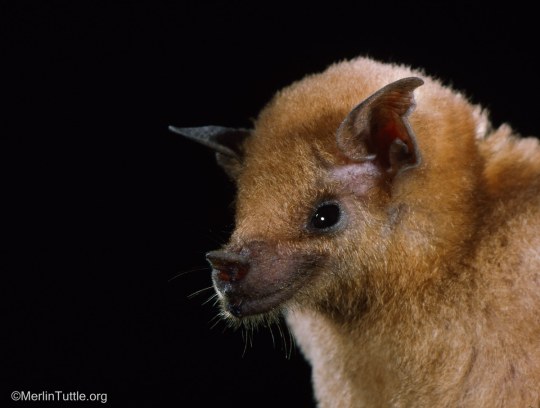
A lesser long-nosed bat (Leptonycteris yerbabuenae) in Mexico.
Sweet Bat Portraits Dispel Stereotypes of These Incredibly Important Mammals
Photographer: Dr. Merlin Tuttle
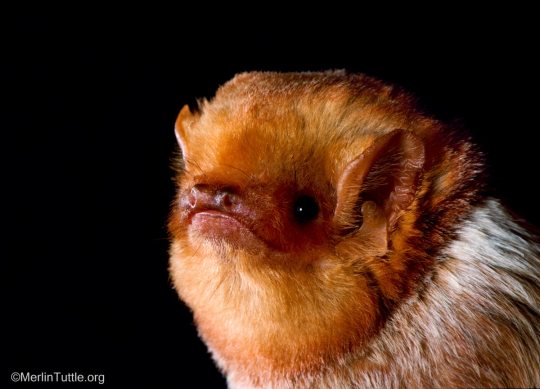
An adult male eastern red bat (Lasiurus borealis) in Florida.

A spotted bat (Euderma maculatum) in Utah.
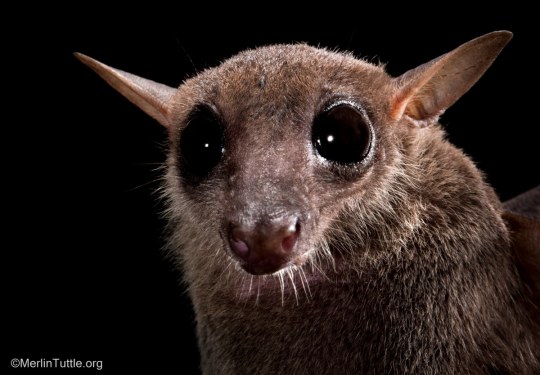
Cave nectar bats (Eonycteris spelaea) are found throughout most of Southeast Asia where they are extraordinarily important pollinators of ecologically and economically important trees, including durian, petai, wild banana and mangroves. They live in cave entrances where they form large, conspicuous colonies. In the past their colonies sometimes included up to a million or more individuals, but except where protected, their numbers have declined alarmingly.
#merlin tuttle#photographer#lesser long-nosed bat#leptonycteris verbabuenae#bat#animal#mammal#wildlife#eastern red bat#lasiurus borealis#florida#stopped bat#euderma maculatum#utah#cave nectar bats#eonycteris spelaea#asia#nature
55 notes
·
View notes
Text

Endo's Pipistrelle, potentially photographed by a Hi-Tanio, (source)
#Endo's Pipistrelle#pipistrellus endoi#bat#bats#cute bats#daily bats#bats of asia#batposting#chiroptera#pipistrelle#vesper bat#vespertilionidae
77 notes
·
View notes
Text
Gotta Love a Lump

#Beccarri's Free-tail bat#bats of asia#bat of the day#daily bat#bat#bats#batposting#cute bats#cute animals#look at them#I love them
402 notes
·
View notes
Text
pooja chauka kyun diya re
2 notes
·
View notes
Text
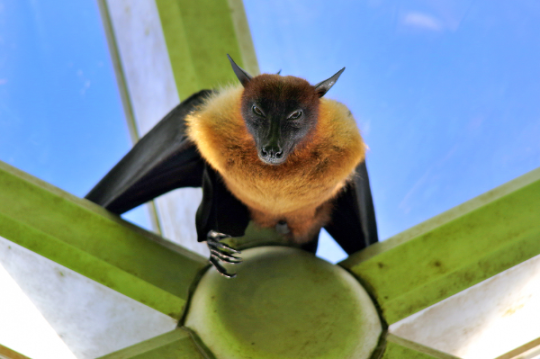

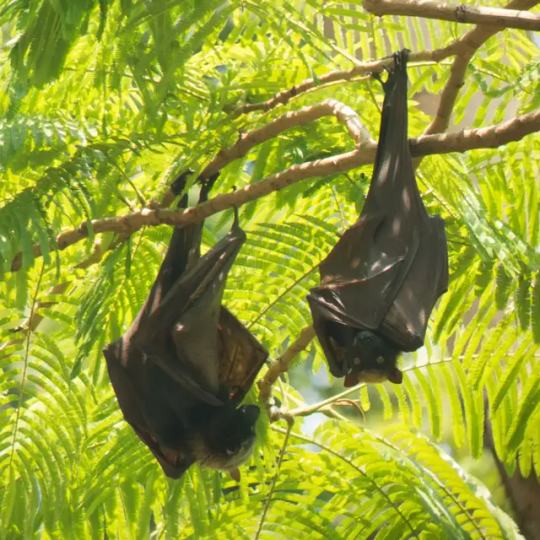
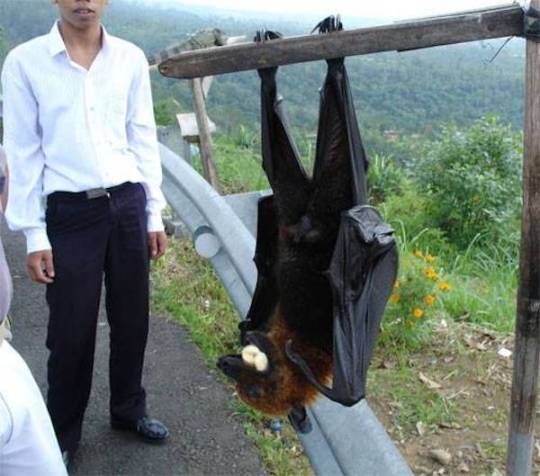

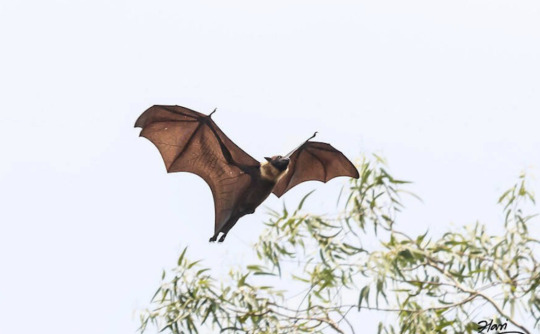
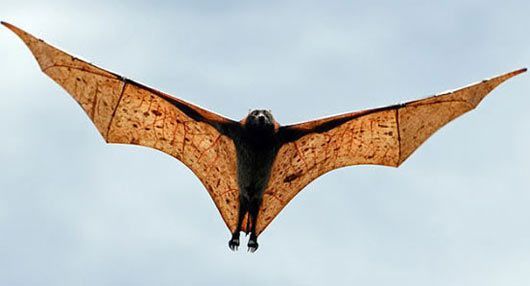
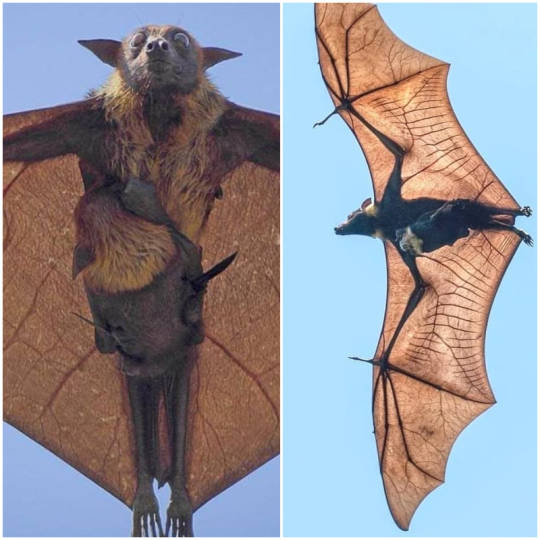
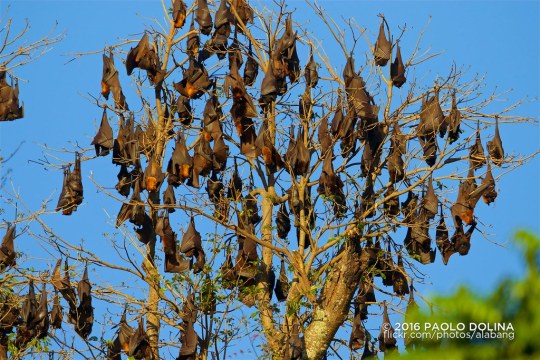
The giant golden-crowned flying fox also known as the golden-capped fruit bat is a species of megabat which is native and endemic exclusively to the islands of the Philippines. They tend to inhabit old growth rainforest and forested river ways, they are a primarily nocturnal species which spends its days resting and socializing in colonies up to several thousand strong, which often includes members of other bat species such as the large flying fox. Come sunset these megabats take flight in search of food such as leaves, tree sap, nectar, and fruit especially figs. Unlike other bats which navigate using echolocation, golden capped fruit bats have large well developed eyes with excellent dark vision. These megabats are preyed upon by reticulated pythons, crocodiles, and birds of prey such as the Philippine Eagle. Reaching upwards of 2ft (60cms) in length, 3.5lbs (1.6kg) in weight, with a 5.6ft (1.7m) wingspan, the giant golden-crowned flying fox is one of if not the largest bat on earth. It gets its common name from it the coloration of its fur which is yellow from the top of the head down to the shoulders. The sides of its face, brows, and throat are black, while the sides of its neck and upper back are maroon; this maroon fur transitions into brownish black, which then grades into reddish brown down the back. The belly and hindlimbs are generally brownish-black, and its wings are pale brown. They are a polygynous species which breeds twice a year, females generally give birth in April-June to a single offspring. Under ideal conditions a giant golden-crowned flying fox will reach sexual maturity at 2 years of age and may live up to 30.
#pleistocene#pleistocene pride#pliestocene pride#pliestocene#cenozoic#bat#fox#golden#gold#golden crowned flying fox#flying fox#fruit bat#golden capped fruit bat#asia#philippines
11 notes
·
View notes
Text
master asia beating the hell out of a machine primeval
tremendous
#bats speaks#also master gundam's animations are great#forgot how much I liked that design#the best part of the entire thing is that master asia is still definitely evil he's just not machine primeval evil#also now that I think about it zonders and DG cells aren't too different so there's probably conflict there too#they cannot coexist anyway#can't be a zonder and the devil gundam at the same time
8 notes
·
View notes